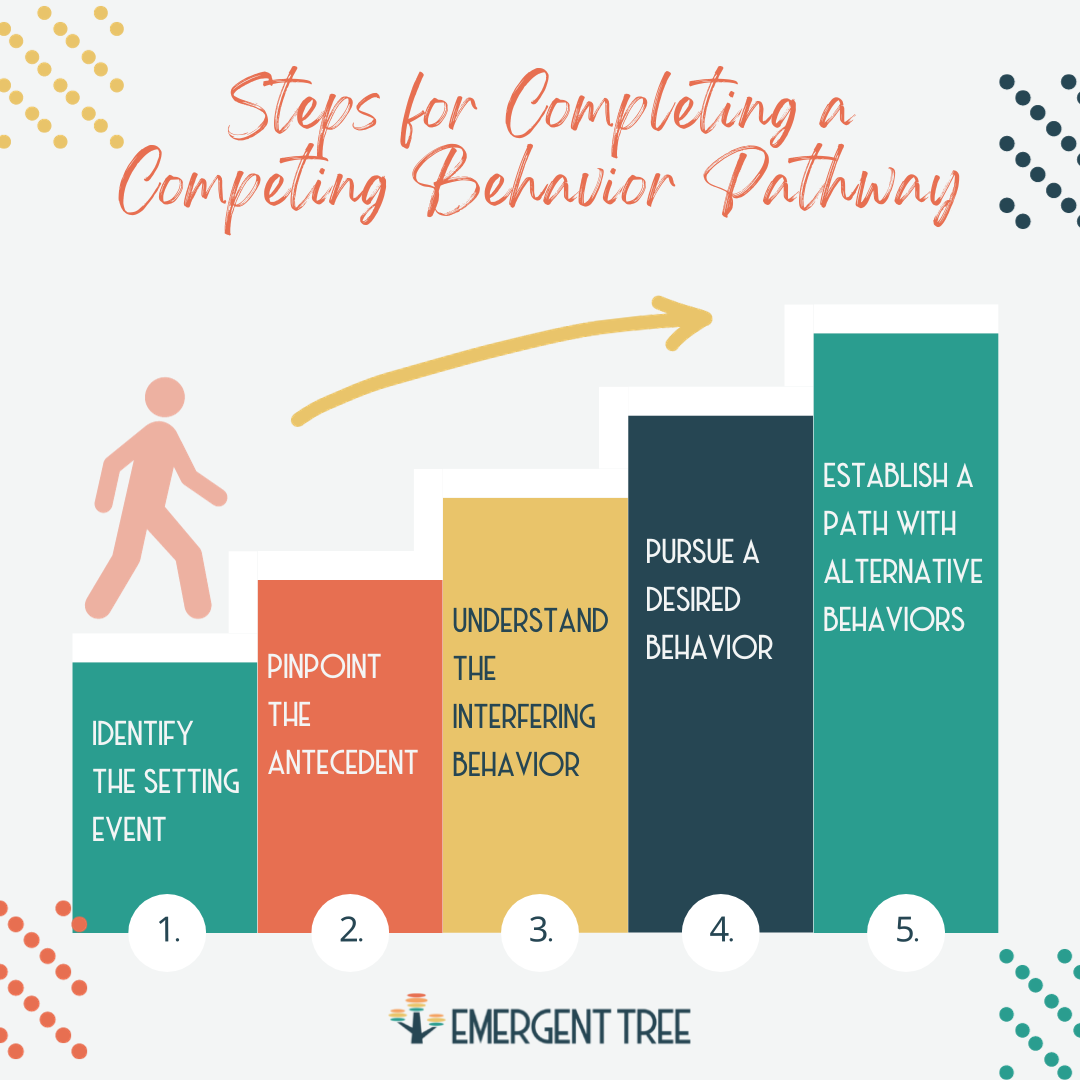Don’t Play Telephone. Create Pathways.
Remember playing telephone with your friends? The first person in the line would whisper a phrase into their neighbor's ear, and then it would get passed along the line. I’m sure you experienced some gut-wrenching laughs as you heard what the beginning phrase was compared to where it ended. Everyone hears things differently, and assumptions are made along the way.
It’s easy to experience this in the classroom with your students if we aren’t careful. Students have different situations that have caused them to experience challenges with behaviors. Different things trigger behavior responses for each student, and it’s important that we don’t let any one student get lost in the shuffle with assumptions or oversights.
It may feel like a great dream to support each student uniquely for their needs in behavior, but does it feel like a tall mountain to climb? Let me take you on a pathway that can give you a focused plan for each student to support their uniqueness and help them thrive through their challenges.
Steps for Completing a Competing Behavior Pathway:
Let me introduce you to the “Competing Behavior Pathway.” Building this pathway involves a series of steps that help us look at the whole picture of the student’s interfering behavior and help them achieve a new desired behavior. We leverage a 1-5 scale for analyzing the behaviors and situations the students are experiencing.
- Identify the Setting Event - Building a pathway starts with understanding what the “setting event” is. This is a situation or experience that took place that may cause the interfering behavior to be more likely to happen.
- Example: A student stays up too late at night and comes to school tired.
- Pinpoint the Antecedent - what is it that triggers the behavior to occur?
- Example: A tired student is faced with taking a math test and freezes up because they can’t focus.
- Understand the Interfering Behavior - This reflects the student’s current situation. What is their present level of behavior? What behaviors do they currently display?
- In our 1-5 scale, the present behavior is a 2, and the regression behavior is a 1.
- The regression behavior won’t happen every day, but we want to understand how often and what the antecedent was that triggered it.
- The present behavior is helpful to track to see the progress of movement toward the desired behavior.
- Pursue a Desired Behavior - Now that we’ve identified the present and regression behaviors, we want to determine a desired behavior to pursue.
- This would be five on our scale and should be achievable by the end of the year.
- What’s the goal? What do we want students to be able to display ideally instead of the interfering behavior?
- Establish a path with Alternative Behaviors - these progressive behaviors help the student work to get to the desired behavior.
- In our 1-5 scale, the alternative behaviors would be represented as a 3 & 4.
- We want to ensure our alternative behaviors are explicitly taught to students in a social skill or small group setting through modeling, role-playing, and prompting.
- Look for alternative behaviors that are functionally equivalent to the interfering behavior, allowing the student to see an alternate path for their behavior.
- Example: If the student refuses to work, teach them a non-verbal signal expressing they need a break (3 on the scale).
- Then, provide them an opportunity to give a verbal signal expressing they need a break (4 on the scale). Since their interfering behavior is an escape, these two alternative behaviors give a similar functional path but allow them to express their needs without shutting down.
This process creates a DBRC (Daily Behavior Report Card) scale. By working through these steps, you have a clear path and goals for the student.
What is the Progress Monitor?
The Behavior Progress Monitor, in its most straightforward description, is a tool that tracks behavior goals throughout a school day.
What does it track? Three areas are tracked with the progress monitor:
- Skill Acquisition (actual student behavior) - check out this great article on skill acquisition if you’d like to dig deeper.
- Independence Levels (how often is a student able to use alternative behaviors)
- Intervention Fidelity (was a student checked-in with in the morning, checked-out with in the afternoon, getting feedback at their scheduled intervals throughout the day, and able to create a goal, etc.).
How is the data tracked? Data is collected through a DBRC, a research-validated practice, to provide insight and key data points.
Key to Remember:
- Always meet your students where they are at.
- Think about what strategies or replacement behaviors you can teach students that are functionally equivalent for them to reach their goal.
- Be responsive to what is working and what is not - change alternative behaviors until you find some that work.
- Let the data in your DBRC guide you on how things are going so you can make shifts and plan for instruction along the way.
Here are some resources to help you on your own pathway:

Taking a Skills-Based Approach to Behavior Progress Monitoring: Register for our Upcoming Webinar on 11/02
Courses:
- Heart of Behavior Course: Get Equipped with the knowledge and skills needed to conduct quality functional behavior assessments (FBA) and develop effective behavior intervention plans (BIP).
- Feedback with the DBRC Course: Gain guidance for successful implementation of the Feedback with DBRC intervention.
- Check-In Check-Out Intervention for Schools Course: Gain guidance for successful implementation of the Check-In Check-Out intervention.
On-Demand Webinars:

Interested in Learning More about our Behavior Progress Monitoring Tool? Schedule a Demo, and we’ll give you the tour!



Comments